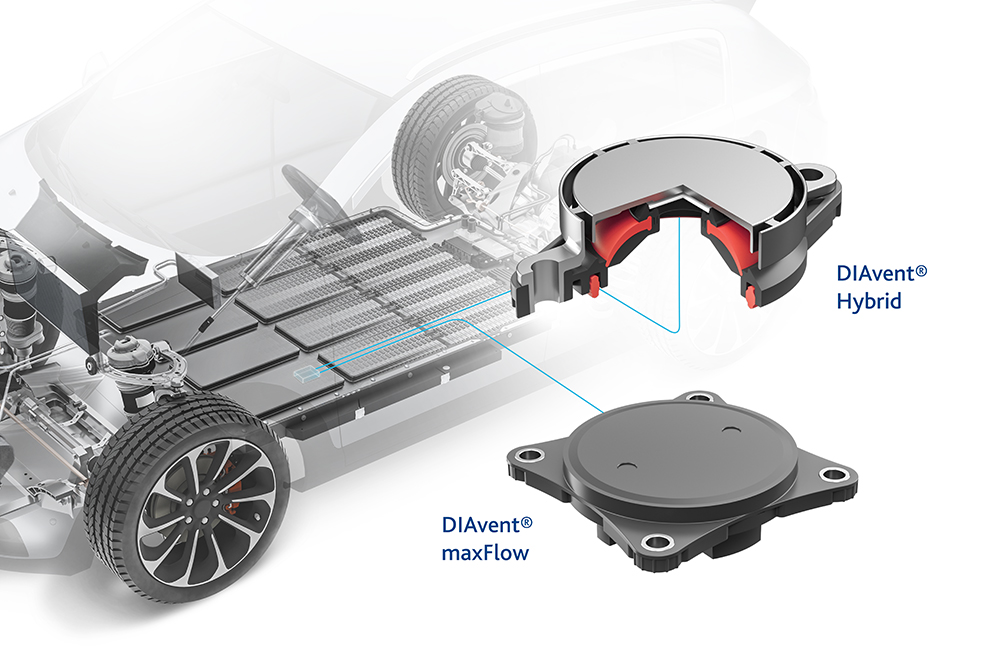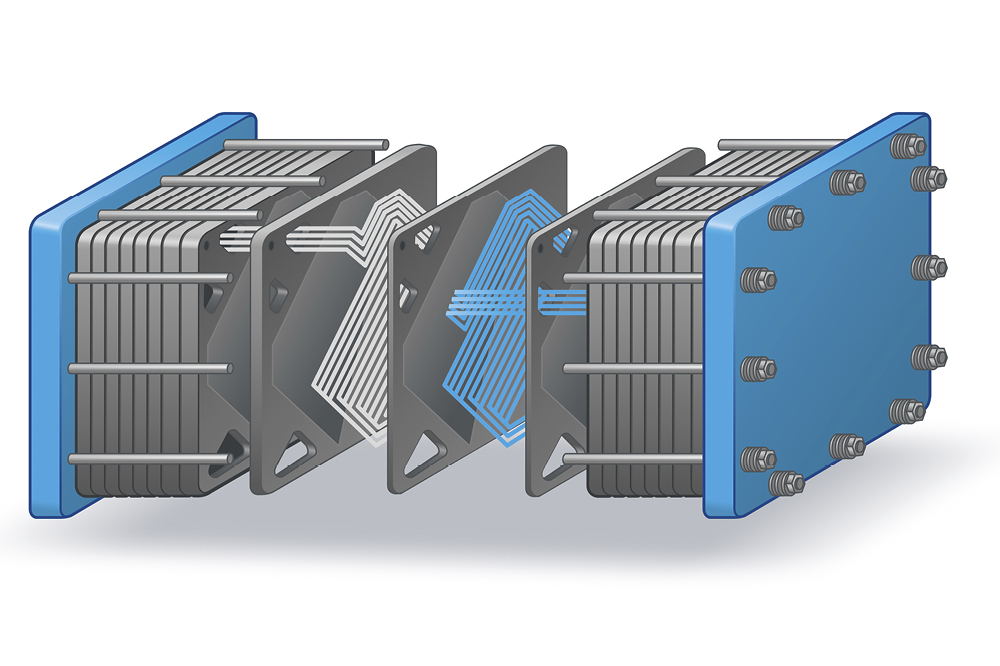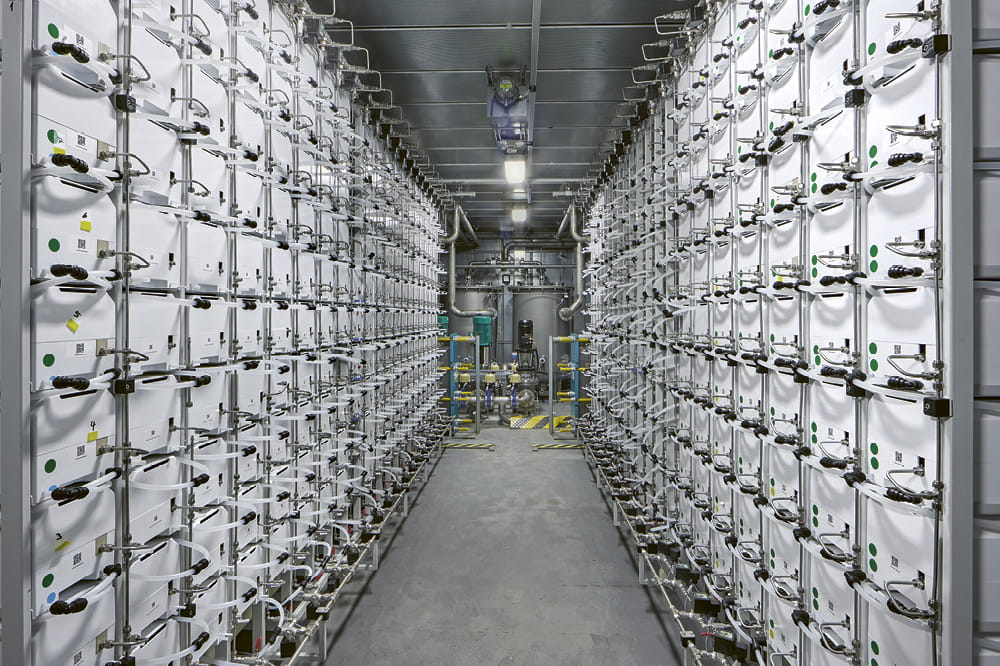Obtain news and background information about sealing technology, get in touch with innovative products – subscribe to the free e-mail newsletter.
27.06.2018 | Press release
Seals for Climate-friendly Switching Stations
Weinheim (Germany), June 27, 2018 – Sulfur hexafluoride (SF6), a gas 22,800 times more damaging to the climate than carbon dioxide, has been used as a quenching gas in electric substations. So operators and suppliers have been working on ways to use CO2 as a substitute. Freudenberg Sealing Technologies has developed a new special seal known as 70 CIIR 236460 that meets strict requirements for temperature and media resistance in these applications while keeping CO2 molecules securely inside the station.
Substations play an important role in the distribution of electric power. They connect transmission lines, which carry at least 110,000 volts, to local grids, which have between 10,000 and 30,000 volts. Combined with a high current density, the difference in voltages leads to repeated electric arcs at the switches of transformers – the air molecules are energetically charged to the point that they become plasma. One way to prevent electric arcs: Make the switching facilities large enough to have an adequate distance between the contacts. But in the era of the energy transition and grid expansion, many switching and distribution stations are found in urban areas with too little space for this. Instead, the switches for high and medium voltage are filled with a protective gas. If they are opened, the gas ensures that that the charge quickly separates and electric arcs do not form. And if an arc ever did, the gas would quickly extinguish it, allowing the switch to continue to function safely.
One protective gas that meets the requirements especially well is sulfur hexafluoride (SF6). It fills the switch under high pressure, and then has very high dielectric strength as an insulating material. The compressed gas can separate the electric charge even under high voltage. Since the molecule is relatively large, it migrates through rubber – and thus through O-rings and special seals – very slowly. These products seal the passages for the electric lines running through the housings for the switches.

But this protective gas has a major disadvantage – it is 22,800 times as damaging to the climate as carbon dioxide. Regulations in Europe and in the United States that limit the use of fluorinated greenhouse gases like SF6 have set off a search for substitutes. Today a handful of potential materials based on carbon dioxide have been identified. They are far more climate-friendly than SF6, but they have a huge disadvantage as well: They migrate much too easily through the sealing material. “It is like a balloon,” said Dr. Robert Rotzoll, material developer at Freudenberg Sealing Technologies. “At first, it is filled to bursting, but over time the air or the helium escapes through the rubber surface.” Permeation is the process by which a gas penetrates or migrates through a solid body. And it is much greater for CO2 molecules, with their smaller sizes and different structures, than it is for SF6.
For this reason, the material experts at Freudenberg Sealing Technologies have developed two new materials. They meet carbon dioxide’s higher requirements for permeation, without declines in temperature or media resistance. For example, the seals must withstand a temperature of 100°C as well as -50° C, so they can function in switching stations in colder regions. The sealing material must also have a long service life and thus be resistant to aggressive media, such as ozone, that act on the seal from outside.
While one material was developed from EPDM rubber, the second solution, known as 70 CIIR 236460, uses a synthetic rubber based on chlorobutyl (CIIR), which stands out for its low permeability to gases and liquids. It is also used in the tire industry for this reason. “The new seals for climate-friendly alternative gases are fully developed. We have already installed the 70 CIIR 236460 version based on chlorobutyl in prototype switches,” Rotzoll said. Freudenberg Sealing Technologies will test the new seals jointly with its customers – so green electricity can be transported in an even more climate-friendly way in the future.
Press Release Downloads
Seals for Climate-friendly Switching Stations
Last update: 27.06.2018
English | DOCX | 83 KB
DownloadUlrike Reich
Head of Media Relations & Internal Communications
Telephone: + 49 (0) 6201 960 5713
ulrike.reich@fst.com chevron_rightNews Service
You can subscribe to the Freudenberg Sealing Technologies news alert service, bringing you the news as soon as they are published. You can always unsubscribe from this service.
Subscribe now! chevron_rightMore news on the subject Technology & Innovation

First Hand News
Best of all, keep up with the latest developments
with the Freudenberg Sealing Technologies newsletter.









